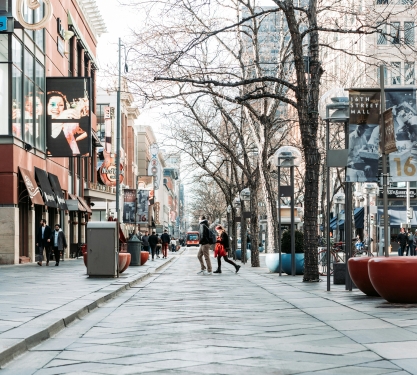
Celebrate the holidays in Denver with The Crawford Hotel’s guide to Union Station lights, Christmas markets, festive shows, and New Year’s Eve events in LoDo.
Stay & Snooze: Enjoy 20% off and a $60 breakfast credit at Snooze when you book our Bed & Breakfast package.
On a stroll through the vibrant streets of downtown Denver, it can be hard to imagine that the city’s many historic buildings were once at risk of demolition. Harder still to believe is that they were rescued by one of the most unlikely people imaginable — at least, by 1960s standards: a young wife and mother named Dana Crawford.
Born in Salina, Kansas, Crawford moved to Denver in 1953 after graduating from the prestigious Radcliffe College in Cambridge, Massachusetts. During her time there, she became enamored with the historic streetscapes and grand heritage buildings of New England. In 1954, she married geologist John W. R. Crawford III, and the couple subsequently had four sons together. But her legacy in Denver would reach much further than the happy family life she cultivated here. Over the coming decades, Crawford would establish herself as a visionary developer, icon of civic preservation, and eventual namesake of The Crawford Hotel. Read on to learn about six historic Denver buildings that owe their continued existence to her tireless efforts.
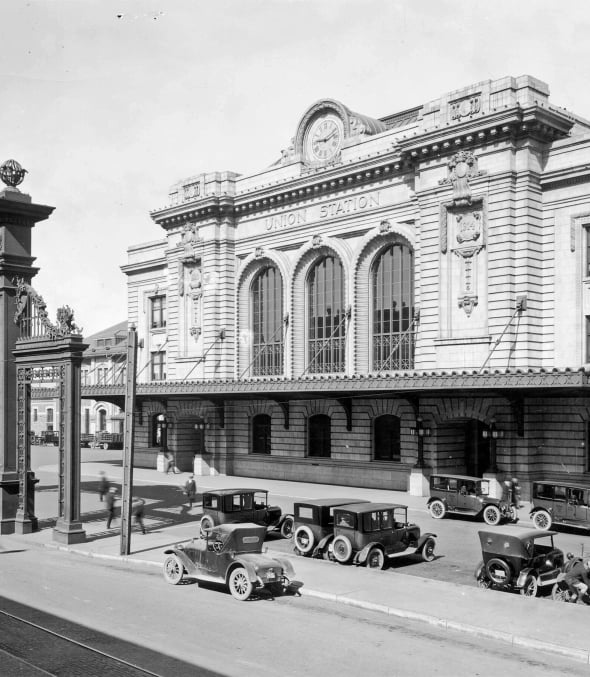
Before she became the preservationist powerhouse we know her as today, Dana Crawford got her start on the same historic blocks as Denver itself: Larimer Square. Named for the city’s founder, William H. Larimer Jr., this section of Larimer Street between 14th and 15th Streets was Denver’s original Main Street, home to its first residence and first city hall. It survived the devastating fire of 1863, but gradually deteriorated over the next hundred years. By the early 1960s, the block was known as Denver’s Skid Row.
As fate would have it, Dana Crawford’s car broke down on this very block in 1963 as she was shopping for antiques. Waiting for a tow truck, she was struck by the beauty of these derelict buildings, reminiscent of the ones she had so admired in Massachusetts during her college years. She resolved to try to save them — but her plans ran counter to Denver Urban Renewal Authority’s Skyline Urban Renewal Project, which looked to demolish roughly thirty city blocks to make room for new and modern development.
In response, Crawford formed Larimer Square Associates, and began quietly buying up and restoring derelict properties on the historic 1400 block. Eager to preserve as much of the buildings’ original character as possible, she hired local stonemasons, glassworkers, and craftspeople to assist in the restoration. Larimer Square Associates also tapped architect Langdon Morris Jr., who designed a series of period-sympathetic courtyards and arcades to create additional open space, creating the thriving public square our city enjoys today.
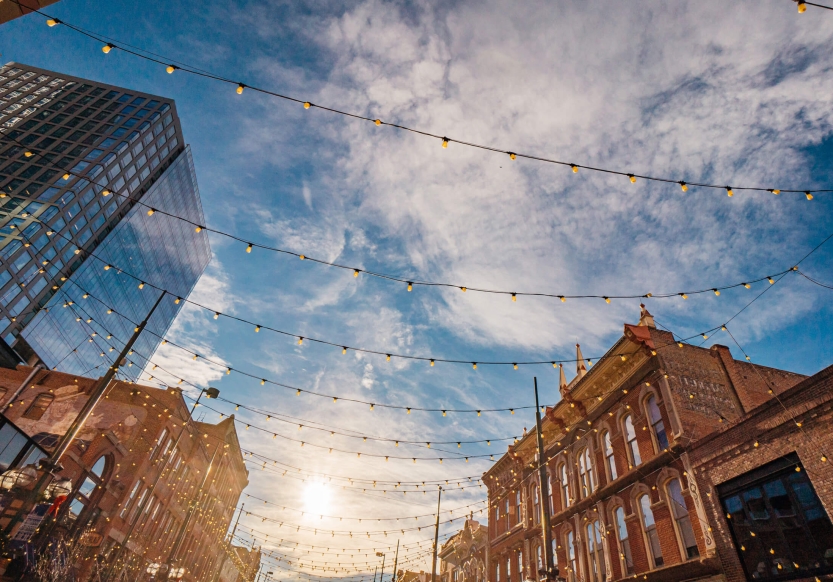

For anyone with even a passing familiarity with the Mile High City, Denver Union Station needs no introduction. The breathtaking Beaux-Arts landmark on historic Wynkoop Street dates back to 1914 and the golden age of railway travel. At its peak, the Station welcomed more than 50,000 visitors daily. But with the advent of the interstate highway system came the gradual waning in popularity of train travel, and by the middle of the 20th century, the building had fallen into disuse.
In 2001, Dana Crawford began an earnest effort to revitalize the unique landmark location, reimagining the space as a multi-modal transit hub and destination for shopping, dining, and cultural events. In 2014, the Station reopened, complete with airport rail service and the all-new Crawford Hotel — named in tribute to the visionary preservationist behind its inspired revitalization.
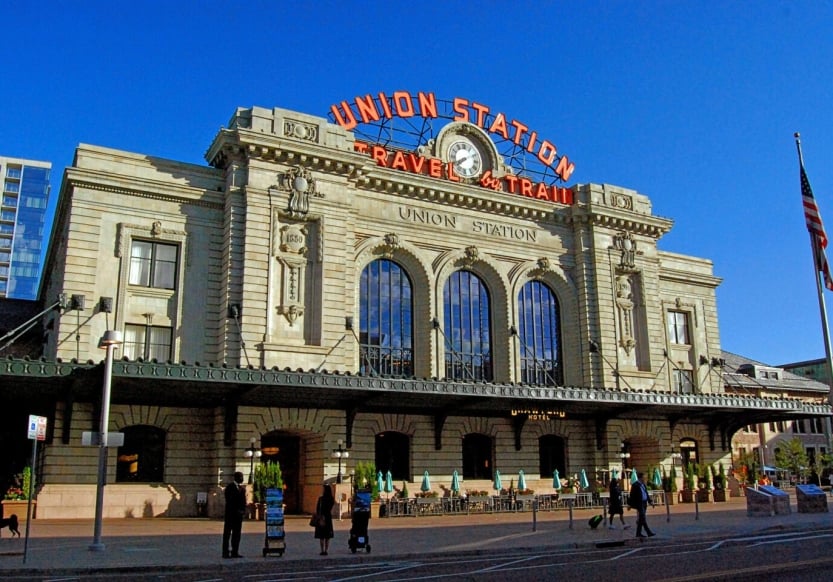
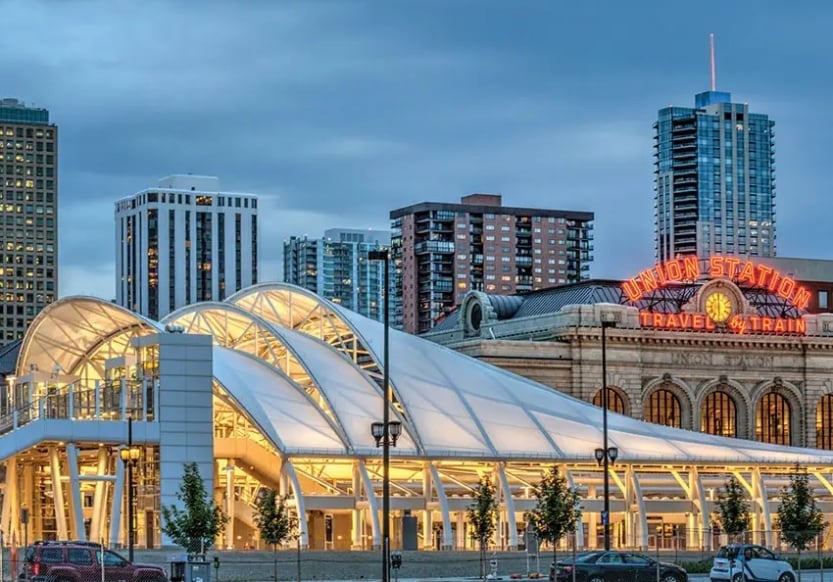
Less than a block away from Denver Union Station, the historic Ice House Condominium at 1801 Wynkoop Street offers a stunning example of turn-of-the-century, Renaissance-style architecture. Built in 1903, the LoDo landmark was once home to Beatrice Foods and the Littleton Creamery. Its distinctive polychromatic brick exterior is hard to miss, emblazoned with a hand-painted “Ice House” sign that harkens back to the landmark’s early days as a cold storage warehouse.
Added to the National Register of Historic Places in 1985, the building underwent an extensive restoration led by Dana Crawford and Charles Calloway, who transformed the space into the Denver Design Center. A second, more extensive renovation in 1997 saw the building converted into 89 condominium units under the guidance of the Colorado Historical Foundation and Denver Landmark Commission. Today, the Ice House is a coveted downtown address, home to spacious, rustic-industrial lofts that boast no shortage of charm and character, including exposed brick, old-growth timber beams, and energy-efficient windows designed to perfectly replicate those of the original building.
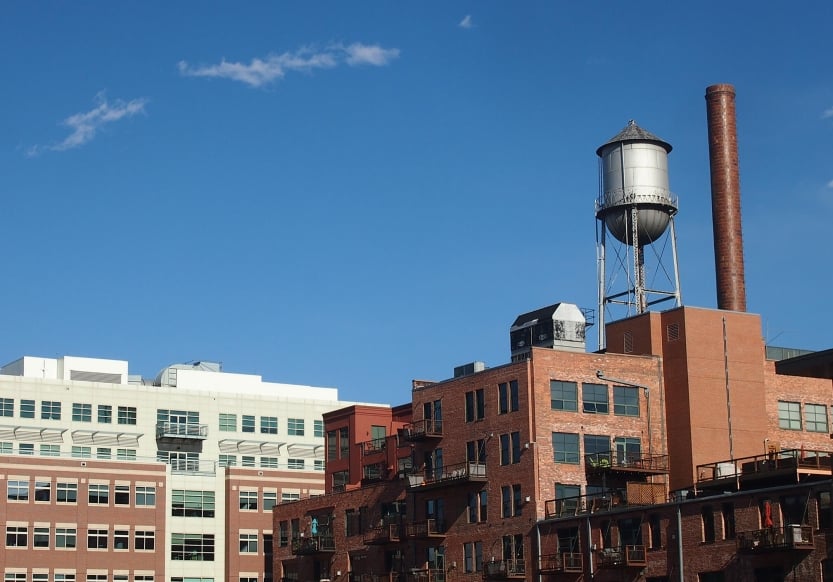
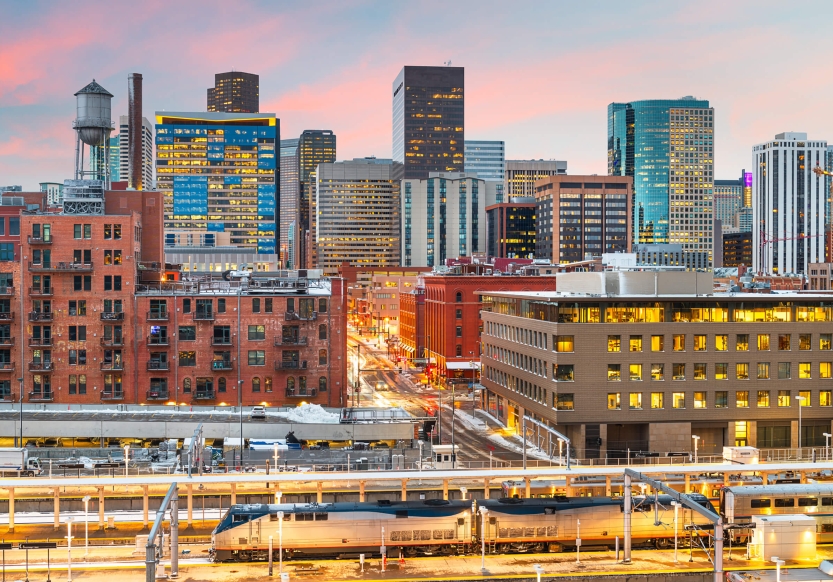
More than a hundred years before The Crawford Hotel would open its doors to the public, Denver was the West’s original boomtown: a major rail hub thanks to newly constructed Union Station. Sensing a business opportunity, local tycoons Adolph Zang, Philip Feldhauser, and William Mygatt saw the need to create a first-class hotel that could cater to this new influx of train travelers.
The trio tapped prominent architect Frank Edbrooke — affectionately known as “the dean of Denver architecture” — to design what would become The Oxford Hotel. Built in 1891, the distinctive pink-sandstone-and-terracotta structure has a long and storied history. Once a glamorous Gilded Age hotel, it operated as an illicit speakeasy during Prohibition, complete with secret passageways and tunnels. By the 1950s, like many historic buildings in downtown Denver, The Oxford had fallen into disrepair.
In 1979, developer Charles Callaway purchased the property. Callaway joined forces with Dana Crawford on an extensive, $12-million period-sympathetic renovation that preserved much of the building’s original character. Today, you can immerse yourself in The Oxford’s Art Deco past at The Cruise Room, a historic upscale cocktail lounge that pays homage to the landmark’s speakeasy past.
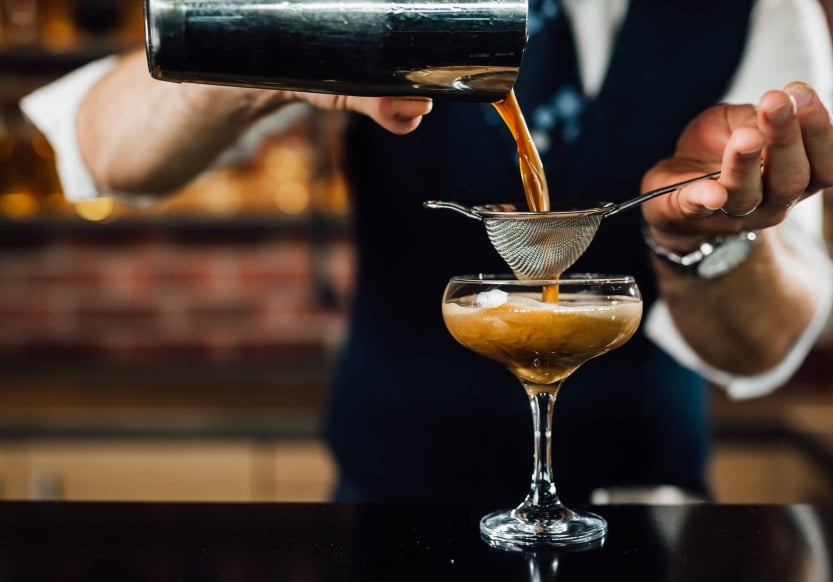
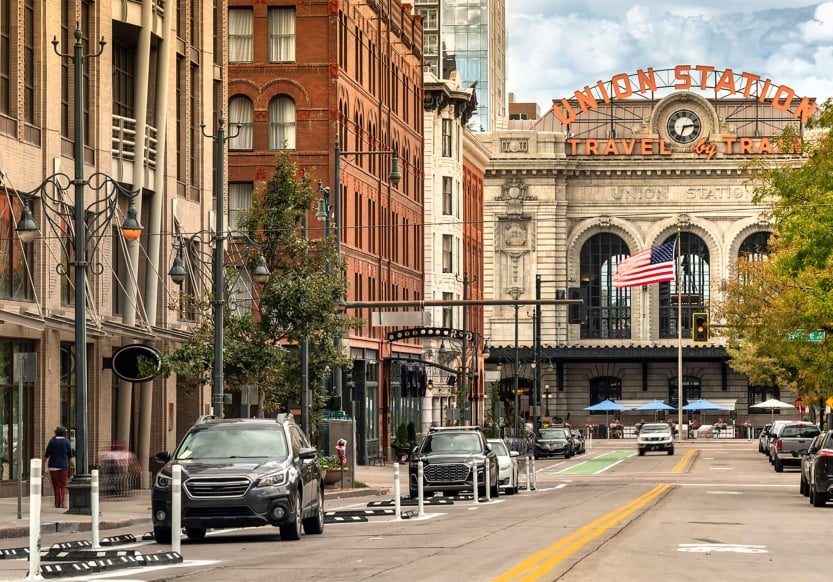
Rescued from the wrecking ball, downtown Denver offers an enviable example of adaptive reuse in action, with historic buildings finding new life as contemporary apartments, hotels, businesses, and gathering spaces. For the 135-year-old Molly Brown House, however, Dana Crawford’s focus was not on reimagining the building for some new purpose, but rather, meticulously restoring it to its original glory.
A blend of Queen Anne and Richardsonian Romanesque styles, the stately mansion at 1340 Pennsylvania Street was the onetime home of Margaret Brown, a prominent socialite, philanthropist, and Titanic survivor known to history as “the unsinkable Molly Brown.” Designed by architect William A. Lang, the house was purchased in 1894 by Margaret’s husband, self-made mining magnate J.J. Brown, for $30,000 — the equivalent of about $1.1 million today. It was used as a part-time residence by the globe-trotting couple, and even briefly served as the state governor’s mansion, before eventually being subdivided into apartments and ultimately falling into disrepair.
In 1970, the non-profit Historic Denver Inc. was formed with a mission to rescue the neglected heritage structure, spearheaded by a tenacious team of preservation-minded Denverites including Dana Crawford. Relying on architectural research, paint chip analysis, and original photographs, the group facilitated a full restoration of the mansion. It reopened in 1971 as the Molly Brown House Museum, where visitors can take a step back in time to Victorian Denver while learning about the fascinating life of the building’s iconic namesake.
Throughout her long and storied career, Dana Crawford has taken an expansive view of preservationism, one that places as much emphasis on restoring celebrated Beaux Arts landmarks as it does on reimagining Denver’s derelict industrial spaces. A prime example of this inclusive approach can be found at 2000 Little Raven Street — known today as the Flour Mill Lofts.
Another project by architect Frank Edbrooke, the century-old building overlooking Commons Park was originally home to the Pride of the Rockies flour mill. Colorado grain was stored and processed here for more than four decades before the building was abandoned and left to sit empty. In 1998, it underwent the first of two major renovations that transformed it into fourteen loft-style residences. A subsequent renovation in 2000 saw the addition of a further 33 loft units, preserving the building’s original grain silos. Today, it’s a sought-after downtown address listed on the National Register of Historic Places.
Stay in grandeur and experience historic LoDo for yourself at The Crawford Hotel — your home base for urban adventure in downtown Denver. Explore design-forward rooms and suites that blend original elements of our century-old building with contemporary touches, and start planning a getaway in the Mile High City that’s truly worthy of the history books.
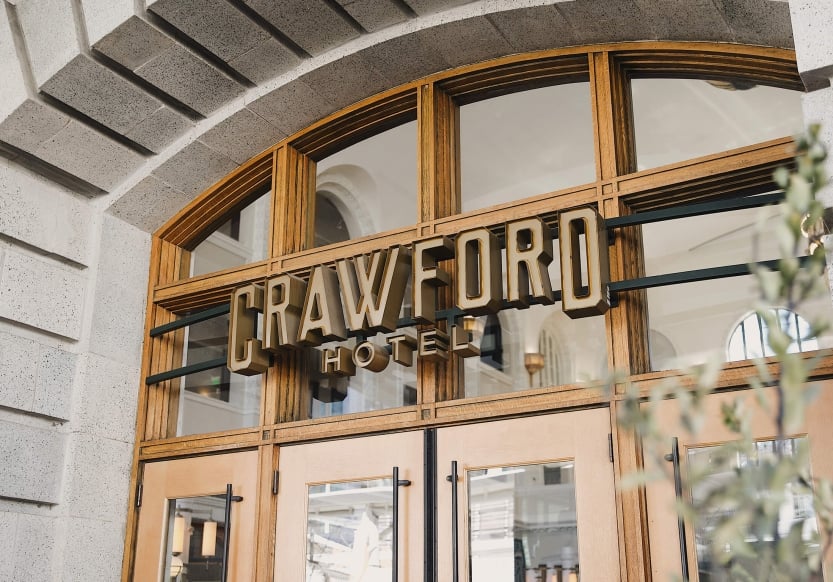
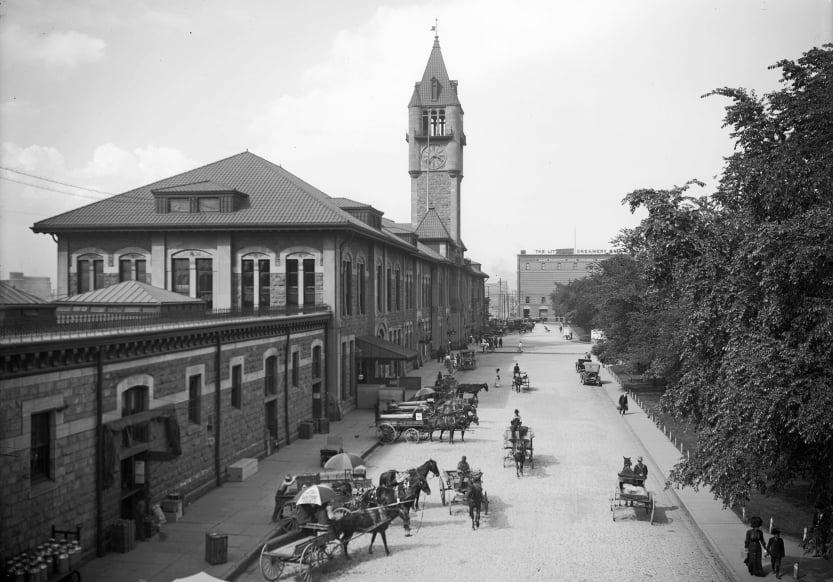

Celebrate the holidays in Denver with The Crawford Hotel’s guide to Union Station lights, Christmas markets, festive shows, and New Year’s Eve events in LoDo.
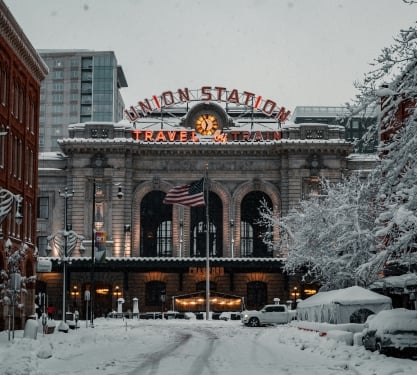
Here in the Mile High City, there’s no such thing as bad weather—only the wrong clothing and gear. So whether you’re hitting the slopes or hitting the town this winter, it pays to be prepared with cozy, comfortable, and versatile items that allow you to embrace the best of the season in style.
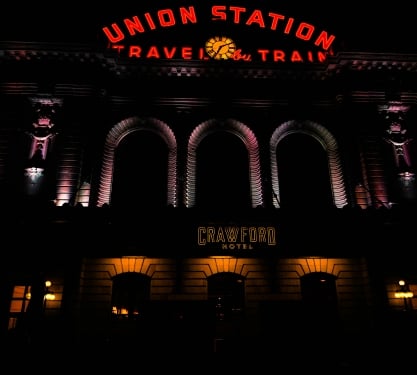
Halloween in the Mile High City is one of our favorite times of year. From the historic (or dare we say, spooky?) architecture of our LoDo neighborhood to whispered tales of spectral figures who haunt these storied streets, Denver offers no shortage of inspiration for anyone looking to embrace the season’s thrills and chills. Add in crisp fall air, captivating ghost tours, and family-friendly Halloween happenings, and you’ve got a recipe for a frightfully good time.
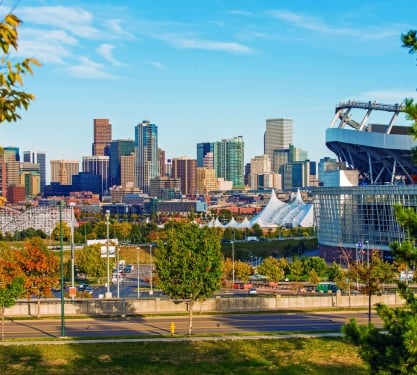
There’s something almost magical about fall mornings in the Mile High City. The crisp, cool air, bright sunshine, and pops of bold autumn color are somehow made even more beautiful in the early dawn quiet, as the bustling city slowly begins to wake. But don’t let this tranquility fool you: there are plenty of things to see, do, and experience for early risers who want to get a head start on embracing the season. Here, we’ve rounded up our favorite local-approved ideas for a memorable fall morning in Denver, whether you’re looking to take in the fall colors, hunt for the best pumpkin spice latte in town, or get your steps in while the city is still asleep.
Be sure to set your alarm clock—these autumnal Denver experiences are definitely worth waking up early for.

As the sun dips behind the Rockies and the city lights flicker to life, there’s nothing quite like raising a glass to the vibrant spirit of the Mile High City. Anchored in Union Station, The Crawford Hotel places you steps from Denver’s most iconic saloons, inventive mixology destinations, and tucked-away neighborhood favorites. Let this be your refined guide to experiencing the city’s spirited bar scene.
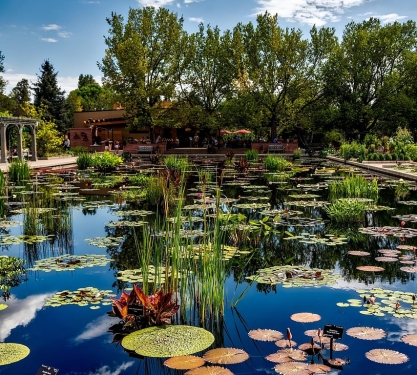
You can learn a lot about a person from their zodiac sign. From romantic compatibility to friendship longevity and even professional career success, it can sometimes seem like so much of our lives, personalities, and destinies really have been written in the stars. So, whether you’re an avid astrology buff or simply looking for inspiration for your next getaway, we’ve rounded up 12 of the best things to do in and around Denver according to your sun sign.
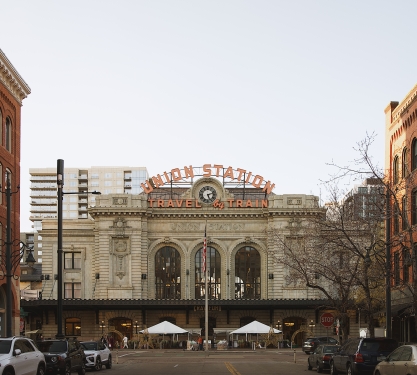
Each season reveals a new side to the Mile High City, but when it comes to can’t-miss local events, summer just might be our favorite. From outdoor concerts and arts festivals to fan conventions and community celebrations, there are just so many things to do in Denver at this time of year. And with The Crawford Hotel as your home base, the city’s top festivals and events are always close at hand, or just a short drive away. So grab your calendar, read on, and explore these must-do summer events to elevate your Denver getaway.

One of the best parts of exploring any new city is experiencing its unique food culture, and Denver is no exception. With a recent influx of award-winning chefs, celebrated restaurants, and incredible dining spots, the Mile High City has found itself in something of a restaurant renaissance. From sweet to savory, meaty to plant-based, Denver abounds with culinary creativity—and The Crawford Hotel puts you right in the heart of its vibrant, ever-evolving food scene.
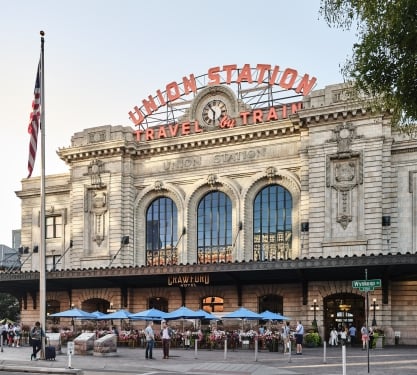
From the crack of the bat at Coors Field to the deafening roar of the crowd at a sold-out Broncos game, Denver’s love of sports is nothing short of legendary. Ensure you don’t miss a single play with this guide to the Mile High City’s must-see events and attractions for sports fans.
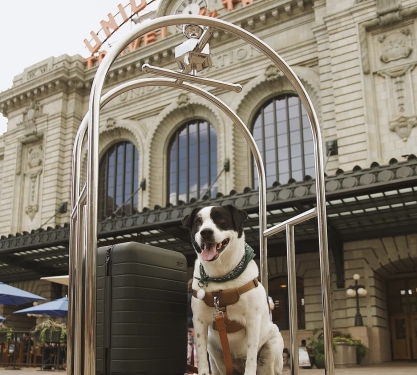
While traveling with a pet can sometimes call for a little extra planning, this helpful roundup of Denver’s best dog-friendly attractions offers the ideal starting point. So come, sit, and stay a while as we explore the best things to do in Denver with dogs.

They say there’s no place like home for the holidays — but when it comes to finding the perfect gift for everyone on your list this year, there’s no place quite like LoDo, either. Filled with breathtaking historic architecture, locally owned boutiques, and joyous festive charm, our iconic Denver neighborhood is a dream destination for holiday shopping.
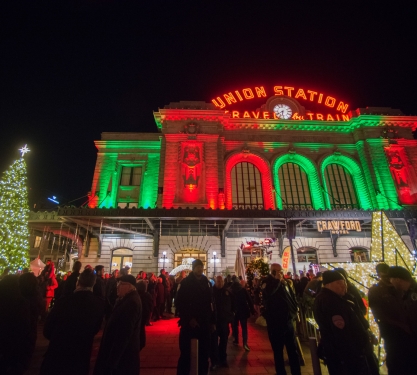
A true four-season destination, Denver knows how to do winter right — from hitting the ice at an outdoor rink to marveling at snow-capped gardens illuminated in more than a million twinkling lights!
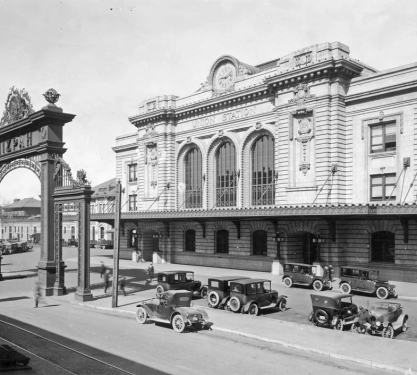
From the golden era of train travel to a visionary transformation through urban renewal and adaptive reuse, embark on a journey through the captivating legacy of one of the Mile High City’s most beloved landmarks.

From the vibrant streetscapes of our heritage districts to the ballet, symphony, and touring Broadway shows, Denver is a city that takes pride in its unique arts and culture scene.

From world-class ski resorts, scenic drives, and idyllic mountain trails to celebrated national parks and one of the most storied venues in rock ‘n roll history, downtown Denver puts you within easy reach of some of Colorado’s top attractions.